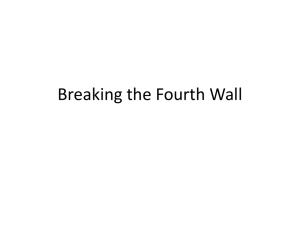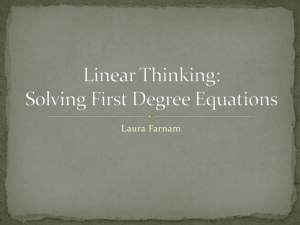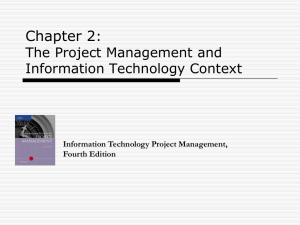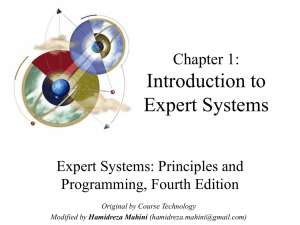Completing the Problem-Solving Process and Getting Started with C++
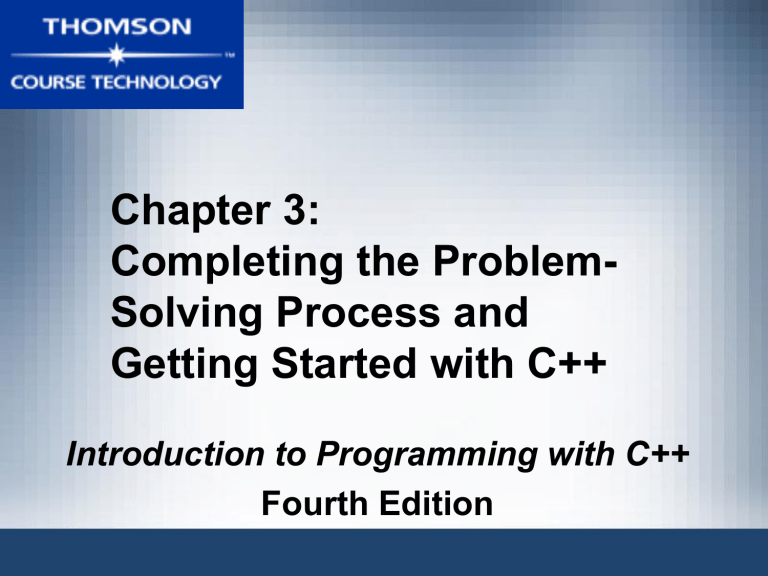
Chapter 3:
Completing the Problem-
Solving Process and
Getting Started with C++
Introduction to Programming with C++
Fourth Edition
Objectives
• Code an algorithm into a program
• Desk-check a program
• Evaluate and modify a program
• Differentiate among source code, object code, and executable code
• Understand the components of a C++ program
Introduction to Programming with C++, Fourth Edition 2
Objectives (continued)
• Create a Visual C++ .NET solution, project, and source file
• Open a Visual C++ .NET solution
• Save, build, and execute a C++ program
• Locate an error in a C++ program
• Make a backup copy of a solution
Introduction to Programming with C++, Fourth Edition 3
More on the Problem-Solving
Process
Introduction to Programming with C++, Fourth Edition 4
Coding the Algorithm into a Program
Introduction to Programming with C++, Fourth Edition 5
Coding the Algorithm into a Program
(continued)
• IPO chart shows:
– Input, processing, and output items
– Algorithm needed to solve the problem
• The algorithm shows the steps to calculate and display Sarah’s new weekly pay
• The calculation is based on the current weekly pay and raise rate values entered by the user
• Algorithm also calculates an intermediate value, weekly raise
Introduction to Programming with C++, Fourth Edition 6
Coding the Algorithm into a Program
(continued)
Introduction to Programming with C++, Fourth Edition 7
Assigning Names, Data Types, and
Initial Values to the IPO Items
• Assign a descriptive name to each unique input, processing, and output item listed in the IPO
• Be aware of naming rules
• Assign a data type to each input, processing, and output item
• Assign an initial value
Introduction to Programming with C++, Fourth Edition 8
Assigning Names, Data Types, and Initial
Values to the IPO Items (continued)
Introduction to Programming with C++, Fourth Edition 9
Translating the Algorithm Steps into C++ Code
Introduction to Programming with C++, Fourth Edition 10
Desk-Checking the Program
Introduction to Programming with C++, Fourth Edition 11
Desk-Checking the Program
(continued)
Introduction to Programming with C++, Fourth Edition 12
Desk-Checking the Program
(continued)
Introduction to Programming with C++, Fourth Edition 13
Desk-Checking the Program
(continued)
Introduction to Programming with C++, Fourth Edition 14
Desk-Checking the Program
(continued)
Introduction to Programming with C++, Fourth Edition 15
Evaluating and Modifying the
Program
• Debugging - the process of locating and removing any errors, called bugs , in a program
• Program errors can be either syntax errors or logic errors
• You create a syntax error when you enter an instruction that violates the programming language’s syntax
Introduction to Programming with C++, Fourth Edition 16
Evaluating and Modifying the
Program (continued)
• Logic errors - much more difficult to find because they can occur for a variety of reasons and do not trigger an error message from the compiler
Introduction to Programming with C++, Fourth Edition 17
Creating a C++ Program
• C++ evolved from the procedure-oriented C programming language, which was developed in
1972 at Bell Laboratories by Dennis Ritchie
• In 1985, Bjarne Stroustrup (Bell Laboratories) added object-oriented features to C
• C++ is a superset of C
• Source code - C++ instructions
• Source file – contains the source code
Introduction to Programming with C++, Fourth Edition 18
Creating a C++ Program (continued)
• Object code - the 0s and 1s that the computer can understand
• Object file - the file containing the object code
• Linker - combines the object file with other machine code necessary for your C++ program to run correctly
• Executable file - contains all of the machine code necessary to run your C++ program
Introduction to Programming with C++, Fourth Edition 19
Process by which Source Code is
Translated into Executable Code
Introduction to Programming with C++, Fourth Edition 20
Introduction to Programming with C++, Fourth Edition 21
Creating a C++ Program
• Comment (internal documentation) - a message to the person reading the program
• Function - a block of code that performs a task
• Void functions – do not return values after completing their assigned tasks
• Function header - marks the beginning of the function
• Function body - everything between the opening and closing braces
Introduction to Programming with C++, Fourth Edition 22
Summary
• After analyzing a problem, code the algorithm into a program
• Desk-check the program to verify that the algorithm was correctly translated
• Evaluate and modify if necessary
• Program errors can be either:
– Syntax: violate a rule of the language
– Logic: error in the algorithm
Introduction to Programming with C++, Fourth Edition 23
Summary (continued)
• To create and execute a C++ program, you need to have a text editor and a C++ compiler
• Source code is C++ instructions you enter
• The compiler translates source code into machine code, or object code
• Linker produces an executable file containing all of the machine code to run your C++ program
Introduction to Programming with C++, Fourth Edition 24
Summary (continued)
• Programs have various components:
– Comments
– Directives
– using statements
– Functions
Introduction to Programming with C++, Fourth Edition 25


